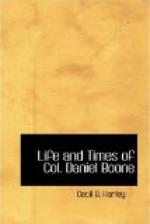“The hand-mill was better than the mortar and grater. It was made of two circular stones, the lowest of which was called the bed-stone, the upper one the runner. These were placed in a hoop, with a spout for discharging the meal. A staff was let into a hole in the upper surface of the runner, near the outer edge, and its upper end through a hole in a board fastened to a joist above, so that two persons could be employed in turning the mill at the same time. The grain was put into the opening in the runner by hand. The mills are still in use in Palestine, the ancient country of the Jews. To a mill of this sort our Saviour alluded when, with reference to the destruction of Jerusalem, he said: ’Two women shall be grinding at a mill, the one shall be taken and the other left.’
“This mill is much preferable to that used at present in upper Egypt for making the dhourra bread. It is a smooth stone, placed on an inclined plane, upon which the grain is spread, which is made into meal by rubbing another stone up and down upon it.
“Our first water mills were of that description denominated tub-mills. It consists of a perpendicular shaft, to the lower end of which an horizontal wheel of about four or five feet diameter is attached, the upper end passes through the bedstone and carries the runner after the manner of a trundlehead. These mills were built with very little expense, and many of them answered the purpose very well.
“Instead of bolting cloths, sifters were in general use. These were made of deer skins in the state of parchment, stretched over a hoop and perforated with a hot wire.
“Our clothing was all of domestic manufacture. We had no other resource for clothing, and this, indeed, was a poor one. The crops of flax often failed, and the sheep were destroyed by the wolves. Linsey, which is made of flax and wool, the former the chain and the latter the filling, was the warmest and most substantial cloth we could make. Almost every house contained a loom, and almost every woman was a weaver.
“Every family tanned their own leather. The tan vat was a large trough sunk to the upper edge in the ground. A quantity of bark was easily obtained every spring in clearing and fencing land. This, after drying, was brought in, and in wet days was shaved and pounded on a block of wood with an axe or mallet. Ashes were used in place of lime for taking off the hair. Bears’ oil, hogs’ lard, and tallow answered the place of fish oil. The leather, to be sure, was coarse; but it was substantially good. The operation of currying was performed by a drawing-knife with its edge turned, after the manner of a currying-knife. The blocking for the leather was made of soot and hogs’ lard.
“Almost every family contained its own tailors and shoemakers. Those who could not make shoes, could make shoepacks. These, like moccasins, were made of a single piece on the top of the foot. This was about two inches broad, and circular at the lower end. To this the main piece of leather was sewed, with a gathering stitch. The seam behind was like that of a moccasin. To the shoepack a sole was sometimes added. The women did the tailor-work. They could all cut-out, and make hunting-shirts, leggins, and drawers.




